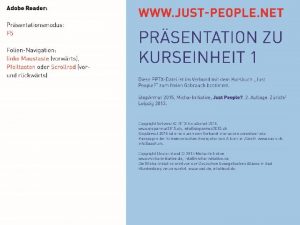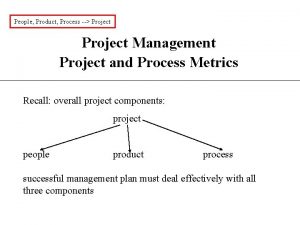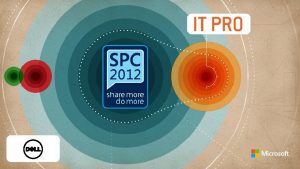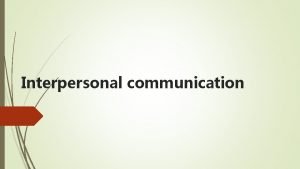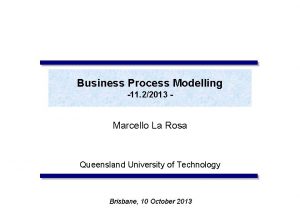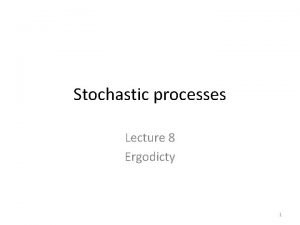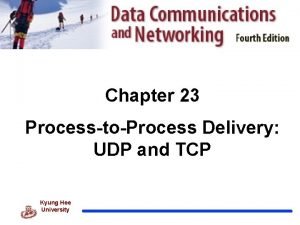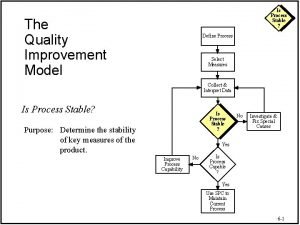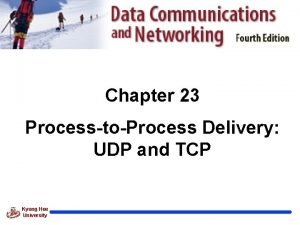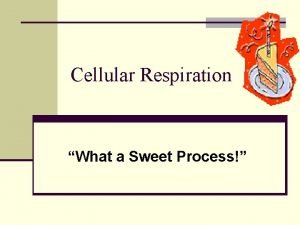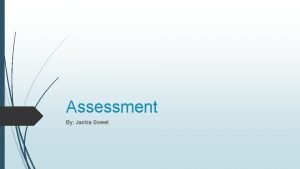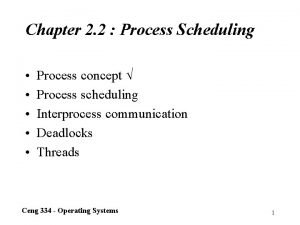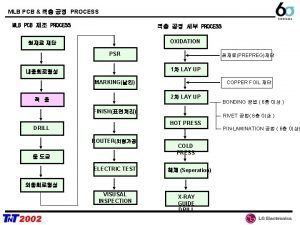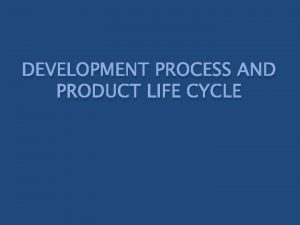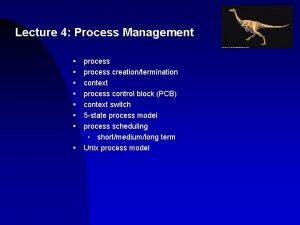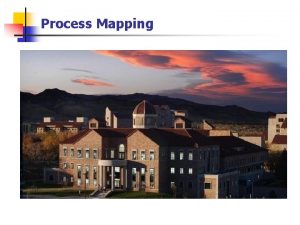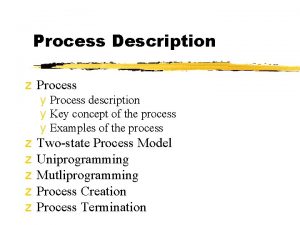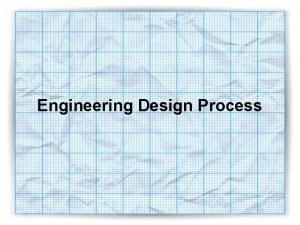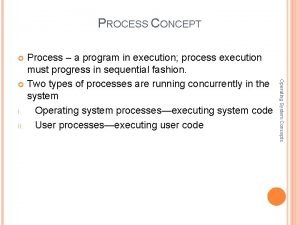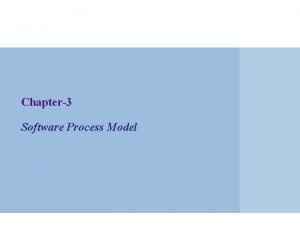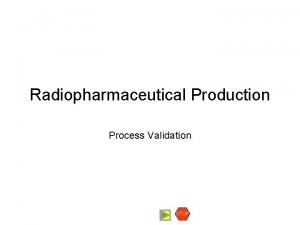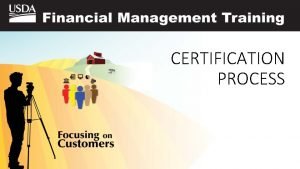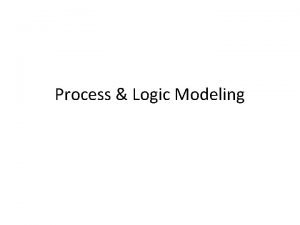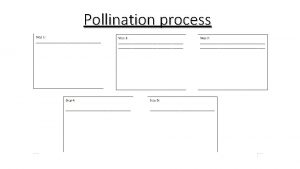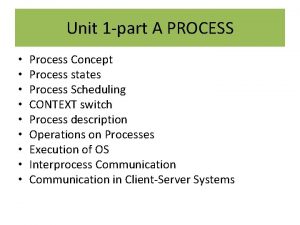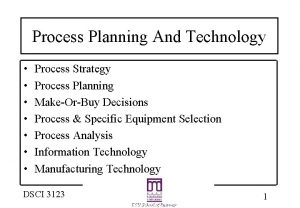People in the process l l l People































































- Slides: 63

People in the process l l l People are an organisation’s most important assets The tasks of a manager are essentially people oriented. Unless there is some understanding of people, management will be unsuccessful Software engineering is primarily a cognitive activity. Cognitive limitations effectively limit the software process ©Ian Sommerville 2000 Software Engineering, 6 th edition. Chapter 22 Slide 1

Management activities l l l Problem solving (using available people) Motivating (people who work on a project) Planning (what people are going to do) Estimating (how fast people will work) Controlling (people's activities) Organising (the way in which people work) ©Ian Sommerville 2000 Software Engineering, 6 th edition. Chapter 22 Slide 2

Problem solving l l l Requires the integration of different types of knowledge (computer, task, domain, organisation) Development of a model of the solution and testing of this model against the problem Representation of this model in an appropriate notation or programming language ©Ian Sommerville 2000 Software Engineering, 6 th edition. Chapter 22 Slide 3

Motivating people l l l Motivations depend on satisfying needs It can be assumed that physiological and safety needs are satisfied Social, esteem and self-realization needs are most significant from a managerial viewpoint ©Ian Sommerville 2000 Software Engineering, 6 th edition. Chapter 22 Slide 4

Group working l Most software engineering is a group activity • l l The development schedule for most non-trivial software projects is such that they cannot be completed by one person working alone Group interaction is a key determinant of group performance Flexibility in group composition is limited • Managers must do the best they can with available people ©Ian Sommerville 2000 Software Engineering, 6 th edition. Chapter 22 Slide 5

Group composition l Group composed of members who share the same motivation can be problematic • • • l l l Task-oriented - everyone wants to do their own thing Self-oriented - everyone wants to be the boss Interaction-oriented - too much chatting, not enough work An effective group has a balance of all types Can be difficult to achieve because most engineers are task-oriented Need for all members to be involved in decisions which affect the group ©Ian Sommerville 2000 Software Engineering, 6 th edition. Chapter 22 Slide 6

Group cohesiveness l l In a cohesive group, members consider the group to be more important than any individual in it Advantages of a cohesive group are: • • Group quality standards can be developed Group members work closely together so inhibitions caused by ignorance are reduced Team members learn from each other and get to know each other’s work Egoless programming where members strive to improve each other’s programs can be practised ©Ian Sommerville 2000 Software Engineering, 6 th edition. Chapter 22 Slide 7

Developing cohesiveness l l Cohesiveness is influenced by factors such as the organisational culture and the personalities in the group Cohesiveness can be encouraged through • • • l Social events Developing a group identity and territory Explicit team-building activities Openness with information is a simple way of ensuring all group members feel part of the group ©Ian Sommerville 2000 Software Engineering, 6 th edition. Chapter 22 Slide 8

Group communications l l l Good communications are essential for effective group working Information must be exchanged on the status of work, design decisions and changes to previous decisions Good communications also strengthens group cohesion as it promotes understanding ©Ian Sommerville 2000 Software Engineering, 6 th edition. Chapter 22 Slide 9

Group organisation l l Software engineering group sizes should be relatively small (< 8 members) Break big projects down into multiple smaller projects Small teams may be organised in an informal, democratic way Chief programmer teams try to make the most effective use of skills and experience ©Ian Sommerville 2000 Software Engineering, 6 th edition. Chapter 22 Slide 10

Choosing and keeping people l Choosing people to work on a project is a major managerial responsibility ©Ian Sommerville 2000 Software Engineering, 6 th edition. Chapter 22 Slide 11

Staff selection factors

The People Capability Maturity Model l l Intended as a framework for managing the development of people involved in software development Five stage model • • • Initial. Ad-hoc people management Repeatable. Policies developed for capability improvement Defined. Standardised people management across the organisation Managed. Quantitative goals for people management in place Optimizing. Continuous focus on improving individual competence and workforce motivation ©Ian Sommerville 2000 Software Engineering, 6 th edition. Chapter 22 Slide 13

The People Capability Maturity Model

Software cost estimation l Predicting the resources required for a software development process ©Ian Sommerville 2000 Software Engineering, 6 th edition. Chapter 22 Slide 15

Fundamental estimation questions l l How much effort is required to complete an activity? How much calendar time is needed to complete an activity? What is the total cost of an activity? Project estimation and scheduling and interleaved management activities ©Ian Sommerville 2000 Software Engineering, 6 th edition. Chapter 22 Slide 16

Software cost components l l l Hardware and software costs Travel and training costs Effort costs (the dominant factor in most projects) • • l salaries of engineers involved in the project Social and insurance costs Effort costs must take overheads into account • • • costs of building, heating, lighting costs of networking and communications costs of shared facilities (e. g library, staff restaurant, etc. ) ©Ian Sommerville 2000 Software Engineering, 6 th edition. Chapter 22 Slide 17

Costing and pricing l l l Estimates are made to discover the cost, to the developer, of producing a software system There is not a simple relationship between the development cost and the price charged to the customer Broader organisational, economic, political and business considerations influence the price charged ©Ian Sommerville 2000 Software Engineering, 6 th edition. Chapter 22 Slide 18

Software pricing factors ©Ian Sommerville 2000 Software Engineering, 6 th edition. Chapter 22 Slide 19

Productivity measures l l Size related measures based on some output from the software process. This may be lines of delivered source code, object code instructions, etc. Function-related measures based on an estimate of the functionality of the delivered software. Function-points are the best known of this type of measure ©Ian Sommerville 2000 Software Engineering, 6 th edition. Chapter 22 Slide 20

Measurement problems l l l Estimating the size of the measure Estimating the total number of programmer months which have elapsed Estimating contractor productivity (e. g. documentation team) and incorporating this estimate in overall estimate ©Ian Sommerville 2000 Software Engineering, 6 th edition. Chapter 22 Slide 21

Lines of code l What's a line of code? • • l l The measure was first proposed when programs were typed on cards with one line per card How does this correspond to statements as in Java which can span several lines or where there can be several statements on one line What programs should be counted as part of the system? Assumes linear relationship between system size and volume of documentation ©Ian Sommerville 2000 Software Engineering, 6 th edition. Chapter 22 Slide 22

Function points l Based on a combination of program characteristics • • l l external inputs and outputs user interactions external interfaces files used by the system A weight is associated with each of these The function point count is computed by multiplying each raw count by the weight and summing all values ©Ian Sommerville 2000 Software Engineering, 6 th edition. Chapter 22 Slide 23

Object points l l l Object points are an alternative function-related measure to function points when 4 Gls or similar languages are used for development Object points are NOT the same as object classes The number of object points in a program is a weighted estimate of • • • The number of separate screens that are displayed The number of reports that are produced by the system The number of 3 GL modules that must be developed to supplement the 4 GL code ©Ian Sommerville 2000 Software Engineering, 6 th edition. Chapter 22 Slide 24

Object point estimation l l Object points are easier to estimate from a specification than function points as they are simply concerned with screens, reports and 3 GL modules They can therefore be estimated at an early point in the development process. At this stage, it is very difficult to estimate the number of lines of code in a system ©Ian Sommerville 2000 Software Engineering, 6 th edition. Chapter 22 Slide 25

Factors affecting productivity ©Ian Sommerville 2000 Software Engineering, 6 th edition. Chapter 22 Slide 26

Quality and productivity l l All metrics based on volume/unit time are flawed because they do not take quality into account Productivity may generally be increased at the cost of quality It is not clear how productivity/quality metrics are related If change is constant then an approach based on counting lines of code is not meaningful ©Ian Sommerville 2000 Software Engineering, 6 th edition. Chapter 22 Slide 27

Estimation techniques l There is no simple way to make an accurate estimate of the effort required to develop a software system • • • l Initial estimates are based on inadequate information in a user requirements definition The software may run on unfamiliar computers or use new technology The people in the project may be unknown Project cost estimates may be self-fulfilling • The estimate defines the budget and the product is adjusted to meet the budget ©Ian Sommerville 2000 Software Engineering, 6 th edition. Chapter 22 Slide 28

Estimation techniques l l l Algorithmic cost modelling Expert judgement Estimation by analogy Parkinson's Law Pricing to win ©Ian Sommerville 2000 Software Engineering, 6 th edition. Chapter 22 Slide 29

Estimation methods l l Each method has strengths and weaknesses Estimation should be based on several methods If these do not return approximately the same result, there is insufficient information available Some action should be taken to find out more in order to make more accurate estimates ©Ian Sommerville 2000 Software Engineering, 6 th edition. Chapter 22 Slide 30

Quality Management l Managing the quality of the software process and products ©Ian Sommerville 2000 Software Engineering, 6 th edition. Chapter 22 Slide 31

Software quality management l l l Concerned with ensuring that the required level of quality is achieved in a software product Involves defining appropriate quality standards and procedures and ensuring that these are followed Should aim to develop a ‘quality culture’ where quality is seen as everyone’s responsibility ©Ian Sommerville 2000 Software Engineering, 6 th edition. Chapter 22 Slide 32

What is quality? l l Quality, simplistically, means that a product should meet its specification This is problematical for software systems • • • Tension between customer quality requirements (efficiency, reliability, etc. ) and developer quality requirements (maintainability, reusability, etc. ) Some quality requirements are difficult to specify in an unambiguous way Software specifications are usually incomplete and often inconsistent ©Ian Sommerville 2000 Software Engineering, 6 th edition. Chapter 22 Slide 33

Quality management activities l Quality assurance • l Quality planning • l Select applicable procedures and standards for a particular project and modify these as required Quality control • l Establish organisational procedures and standards for quality Ensure that procedures and standards are followed by the software development team Quality management should be separate from project management to ensure independence ©Ian Sommerville 2000 Software Engineering, 6 th edition. Chapter 22 Slide 34

Quality management and software development ©Ian Sommerville 2000 Software Engineering, 6 th edition. Chapter 22 Slide 35

Quality assurance and standards l l Standards are the key to effective quality management They may be international, organizational or project standards Product standards define characteristics that all components should exhibit e. g. a common programming style Process standards define how the software process should be enacted ©Ian Sommerville 2000 Software Engineering, 6 th edition. Chapter 22 Slide 36

Importance of standards l l l Encapsulation of best practice- avoids repetition of past mistakes Framework for quality assurance process - it involves checking standard compliance Provide continuity - new staff can understand the organisation by understand the standards applied ©Ian Sommerville 2000 Software Engineering, 6 th edition. Chapter 22 Slide 37

Problems with standards l l l Not seen as relevant and up-to-date by software engineers Involve too much bureaucratic form filling Unsupported by software tools so tedious manual work is involved to maintain standards ©Ian Sommerville 2000 Software Engineering, 6 th edition. Chapter 22 Slide 38

Process and product quality l l l The quality of a developed product is influenced by the quality of the production process Particularly important in software development as some product quality attributes are hard to assess However, there is a very complex and poorly understood between software processes and product quality ©Ian Sommerville 2000 Software Engineering, 6 th edition. Chapter 22 Slide 39

Quality plan structure l l l Product introduction Product plans Process descriptions Quality goals Risks and risk management Quality plans should be short, succinct documents • If they are too long, no-one will read them ©Ian Sommerville 2000 Software Engineering, 6 th edition. Chapter 22 Slide 40

Quality control l l Checking the software development process to ensure that procedures and standards are being followed Two approaches to quality control • • Quality reviews Automated software assessment and software measurement ©Ian Sommerville 2000 Software Engineering, 6 th edition. Chapter 22 Slide 41

Software measurement and metrics l l Software measurement is concerned with deriving a numeric value for an attribute of a software product or process This allows for objective comparisons between techniques and processes Although some companies have introduced measurement programmes, the systematic use of measurement is still uncommon There are few standards in this area ©Ian Sommerville 2000 Software Engineering, 6 th edition. Chapter 22 Slide 42

Software product metrics ©Ian Sommerville 2000 Software Engineering, 6 th edition. Chapter 22 Slide 43

Measurement analysis l It is not always obvious what data means • l l Analysing collected data is very difficult Professional statisticians should be consulted if available Data analysis must take local circumstances into account ©Ian Sommerville 2000 Software Engineering, 6 th edition. Chapter 22 Slide 44

Process Improvement l Understanding, Modelling and Improving the Software Process ©Ian Sommerville 2000 Software Engineering, 6 th edition. Chapter 22 Slide 45

Process improvement l l Understanding existing processes Introducing process changes to achieve organisational objectives which are usually focused on quality improvement, cost reduction and schedule acceleration Most process improvement work so far has focused on defect reduction. This reflects the increasing attention paid by industry to quality However, other process attributes can be the focus of improvement ©Ian Sommerville 2000 Software Engineering, 6 th edition. Chapter 22 Slide 46

Process attributes ©Ian Sommerville 2000 Software Engineering, 6 th edition. Chapter 22 Slide 47

The process improvement process ©Ian Sommerville 2000 Software Engineering, 6 th edition. Chapter 22 Slide 48

Process and product quality l l Process quality and product quality are closely related A good process is usually required to produce a good product For manufactured goods, process is the principal quality determinant For design-based activity, other factors are also involved especially the capabilities of the designers ©Ian Sommerville 2000 Software Engineering, 6 th edition. Chapter 22 Slide 49

Principal product quality factors ©Ian Sommerville 2000 Software Engineering, 6 th edition. Chapter 22 Slide 50

Process analysis and modelling l Process analysis • l The study of existing processes to understand the relationships between parts of the process and to compare them with other processes Process modelling • • The documentation of a process which records the tasks, the roles and the entities used Process models may be presented from different perspectives ©Ian Sommerville 2000 Software Engineering, 6 th edition. Chapter 22 Slide 51

Process analysis and modelling l l l Study an existing process to understand its activities Produce an abstract model of the process. You should normally represent this graphically. Several different views (e. g. activities, deliverables, etc. ) may be required Analyse the model to discover process problems. Involves discussing activities with stakeholders ©Ian Sommerville 2000 Software Engineering, 6 th edition. Chapter 22 Slide 52

Process analysis techniques l Published process models and process standards • l Questionnaires and interviews • l It is always best to start process analysis with an existing model. People then may extend and change this. Must be carefully designed. Participants may tell you what they think you want to hear Ethnographic analysis • Involves assimilating process knowledge by observation ©Ian Sommerville 2000 Software Engineering, 6 th edition. Chapter 22 Slide 53

The module testing activity ©Ian Sommerville 2000 Software Engineering, 6 th edition. Chapter 22 Slide 54

Activities in module testing ©Ian Sommerville 1995 Software Engineering, 5 th edition. Chapter 31. Slide ##

Process exceptions l Software processes are complex and process models cannot effectively represent how to handle exceptions • • l Several key people becoming ill just before a critical review A complete failure of a communication processor so that no email is available for several days Organisational reorganisation A need to respond to an unanticipated request for new proposals Under these circumstances, the model is suspended and managers use their initiative to deal with the exception ©Ian Sommerville 2000 Software Engineering, 6 th edition. Chapter 22 Slide 56

Process measurement l Wherever possible, quantitative process data should be collected • l However, where organisations do not have clearly defined process standards this is very difficult as you don’t know what to measure. A process may have to be defined before any measurement is possible Process measurements should be used to assess process improvements • But this does not mean that measurements should drive the improvements. The improvement driver should be the organizational objectives ©Ian Sommerville 2000 Software Engineering, 6 th edition. Chapter 22 Slide 57

Classes of process measurement l Time taken for process activities to be completed • l Resources required for processes or activities • l E. g. Calendar time or effort to complete an activity or process E. g. Total effort in person-days Number of occurrences of a particular event • E. g. Number of defects discovered ©Ian Sommerville 2000 Software Engineering, 6 th edition. Chapter 22 Slide 58

Goal-Question-Metric Paradigm l Goals • l Questions • l What is the organisation trying to achieve? The objective of process improvement is to satisfy these goals Questions about areas of uncertainty related to the goals. You need process knowledge to derive these Metrics • Measurements to be collected to answer the questions ©Ian Sommerville 2000 Software Engineering, 6 th edition. Chapter 22 Slide 59

The Software Engineering Institute l l US Defense Dept. funded institute associated with Carnegie Mellon Mission is to promote software technology transfer particularly to defense contractors Maturity model proposed in mid-1980 s, refined in early 1990 s. Work has been very influential in process improvement ©Ian Sommerville 2000 Software Engineering, 6 th edition. Chapter 22 Slide 60

Key process areas

The CMM and ISO 9000 l l l There is a clear correlation between the key processes in the CMM and the quality management processes in ISO 9000 The CMM is more detailed and prescriptive and includes a framework for improvement Organisations rated as level 2 in the CMM are likely to be ISO 9000 compliant ©Ian Sommerville 2000 Software Engineering, 6 th edition. Chapter 22 Slide 62

Process choice l Process used should depend on type of product which is being developed • l For large systems, management is usually the principal problem so you need a strictly managed process. For smaller systems, more informality is possible. There is no uniformly applicable process which should be standardised within an organisation • High costs may be incurred if you force an inappropriate process on a development team ©Ian Sommerville 2000 Software Engineering, 6 th edition. Chapter 22 Slide 63
 Hình ảnh bộ gõ cơ thể búng tay
Hình ảnh bộ gõ cơ thể búng tay Bổ thể
Bổ thể Tỉ lệ cơ thể trẻ em
Tỉ lệ cơ thể trẻ em Chó sói
Chó sói Thang điểm glasgow
Thang điểm glasgow Alleluia hat len nguoi oi
Alleluia hat len nguoi oi Môn thể thao bắt đầu bằng chữ đua
Môn thể thao bắt đầu bằng chữ đua Thế nào là hệ số cao nhất
Thế nào là hệ số cao nhất Các châu lục và đại dương trên thế giới
Các châu lục và đại dương trên thế giới Công thức tiính động năng
Công thức tiính động năng Trời xanh đây là của chúng ta thể thơ
Trời xanh đây là của chúng ta thể thơ Mật thư anh em như thể tay chân
Mật thư anh em như thể tay chân Phép trừ bù
Phép trừ bù Phản ứng thế ankan
Phản ứng thế ankan Các châu lục và đại dương trên thế giới
Các châu lục và đại dương trên thế giới Thơ thất ngôn tứ tuyệt đường luật
Thơ thất ngôn tứ tuyệt đường luật Quá trình desamine hóa có thể tạo ra
Quá trình desamine hóa có thể tạo ra Một số thể thơ truyền thống
Một số thể thơ truyền thống Cái miệng nó xinh thế chỉ nói điều hay thôi
Cái miệng nó xinh thế chỉ nói điều hay thôi Vẽ hình chiếu vuông góc của vật thể sau
Vẽ hình chiếu vuông góc của vật thể sau Nguyên nhân của sự mỏi cơ sinh 8
Nguyên nhân của sự mỏi cơ sinh 8 đặc điểm cơ thể của người tối cổ
đặc điểm cơ thể của người tối cổ Ví dụ giọng cùng tên
Ví dụ giọng cùng tên Vẽ hình chiếu đứng bằng cạnh của vật thể
Vẽ hình chiếu đứng bằng cạnh của vật thể Fecboak
Fecboak Thẻ vin
Thẻ vin đại từ thay thế
đại từ thay thế điện thế nghỉ
điện thế nghỉ Tư thế ngồi viết
Tư thế ngồi viết Diễn thế sinh thái là
Diễn thế sinh thái là Dạng đột biến một nhiễm là
Dạng đột biến một nhiễm là Các số nguyên tố là gì
Các số nguyên tố là gì Tư thế ngồi viết
Tư thế ngồi viết Lời thề hippocrates
Lời thề hippocrates Thiếu nhi thế giới liên hoan
Thiếu nhi thế giới liên hoan ưu thế lai là gì
ưu thế lai là gì Khi nào hổ con có thể sống độc lập
Khi nào hổ con có thể sống độc lập Sự nuôi và dạy con của hổ
Sự nuôi và dạy con của hổ Sơ đồ cơ thể người
Sơ đồ cơ thể người Từ ngữ thể hiện lòng nhân hậu
Từ ngữ thể hiện lòng nhân hậu Thế nào là mạng điện lắp đặt kiểu nổi
Thế nào là mạng điện lắp đặt kiểu nổi Identify the type of people as media
Identify the type of people as media People killin people dyin lyrics
People killin people dyin lyrics Transformed people transform people
Transformed people transform people People just people
People just people Bart prudon
Bart prudon People product process project
People product process project People process policy
People process policy Process by which people exchange information
Process by which people exchange information Bones practical exam
Bones practical exam Procedural due process vs substantive due process
Procedural due process vs substantive due process Process hierarchy in process management
Process hierarchy in process management Ergodicty
Ergodicty What is process to process delivery
What is process to process delivery Condylar and coronoid process of mandible
Condylar and coronoid process of mandible Process capability
Process capability Process-to-process delivery
Process-to-process delivery Sweet process
Sweet process Sweet evaluation
Sweet evaluation This is only for young people
This is only for young people History helps us understand people and societies
History helps us understand people and societies Effective communication types
Effective communication types Why did orwell use animals instead of people
Why did orwell use animals instead of people












































